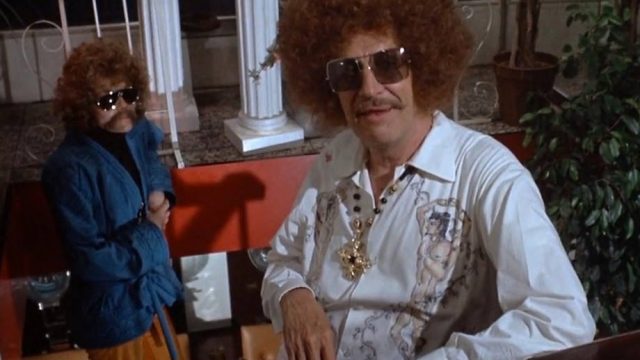One is drowned in a barrel of wine.
One dies when he’s force fed his dogs baked in a pie.
One dies of numerous cuts when a band of homeless squatters stab and slash him.
Two years after the success of The Abominable Dr. Phibes, in which Vincent Price played a man who gets revenge on those who wronged him by killing them in ways inspired by the ten plagues of Egypt as recounted in the Old Testament, and one year after its sequel Dr. Phibes Rises Again, where murders are committed, a little less clearly this time, according to Egyptian mythology, Price starred in another revenge tale called Theatre of Blood. But rather than emulate an angry Old Testament God, the killings pay homage to a secular cultural deity, Shakespeare.
Price plays Edward Lionheart, a vain and, in the opinion of a group of London theatre critics, slightly hammy Shakespearean actor. Lionheart attempts suicide in front these critics after they award an acting prize to a rival after first reciting the “To Be or Not To Be” soliloquy from Hamlet. Presumed dead, he murders the critics one by one, each in a method either taken from or referring to a different play by Shakespeare.
The play’s not the thing. The plot hardly matters. Unlike the two Phibes films which have a story and character motivation apart from the revenge killings, Theatre of Blood is structured around a series of interesting murders. There are scenes, almost filler, of the police investigating the crimes but the movie mainly consists of Lionheart luring his unwitting victims into traps and then dispatching them in dramatic ways. This affords Price the chance to wear disguises, quote Shakespeare, act silly, campy, or menacing in turn. The tone of the death scenes is generally comic. You’re not supposed to take any of this that seriously – the trailer listed the actors who played the critics as “guest victims” — and certainly not supposed to have any sympathy for those killed. The viewer is on the side of Lionheart, if for no other reason that to see what interesting murder he’ll come up with next. A few of the murders are unsettling. The only female critic in the group is electrocuted by a modified hair dryer at a hair salon. The camera lingers on her writhing in pain and her scorched face once she’s dead. Robert Morley plays an early 70’s gay stereotype who is force fed pies made from his beloved poodles, just like the queen (ha ha) in Titus Andronicus who unknowingly eats her sons baked in pies.
One dies when she’s electrocuted at a hair salon.
One is impaled, his body then dragged by a horse.
One murders his wife in bed, convinced that she’s unfaithful.
Theatre of Blood has much in common with works in which the beats and the appeal to the audience are scenes of creative or clever deaths. Agatha Christie’s novel And Then There Were None and its various adaptations features an isolated group of ten people being killed according to a child’s countdown rhyme:
Ten little Indians went out to dine;
One choked his little self and then there were nine.
It’s akin to the dark humor of Edward Gorey’s The Gashlycrumb Tinies from ten years earlier, a mock children’s book that teaches the alphabet according to how 26 children who met their gruesome ends:
E is for Ernest who choked on a peach
F is for Fanny sucked dry by a leech
Similarly the 1966 Batman television series was structured around Batman and Robin being lured into traps to kill them in inventive ways: cooked alive on a rotating spit, suffocated within a giant hourglass, steamed to death inside a large cookbook. One of the scoundrels was even played by Vincent Price!
One is decapitated while he sleeps. His detached head sent rolling when someone shakes him in an effort to wake him up.
One has a pound of flesh, his heart, cut away from him.
Theatre of Blood is a precursor to the Rube Goldberg-style deaths of Final Destination, where the viewer has some sympathy for the victims as they try to avoid their fates and yet still wants to see them cleverly and surprisingly dispatched. The Nightmare on Elm Street series, which began by exploring the helplessness you feel while asleep and controlled by your dream, became examples of Freddy Kruger killing in “funny” surreal ways, complete with bad puns. Hannibal, both the movie and tv series, featured artfully arranged tortures and murders. It seemed as if the show’s creator Bryan Fuller was always trying to outdo Thomas Harris’s Hannibal feeding a victim pieces of his own brain. One suspects that Shakespeare would have included such a grisly yet darkly comic scene in one of his plays had he thought of it. Shame we never got to see Vincent Price adapt it for a particularly smarmy critic.

